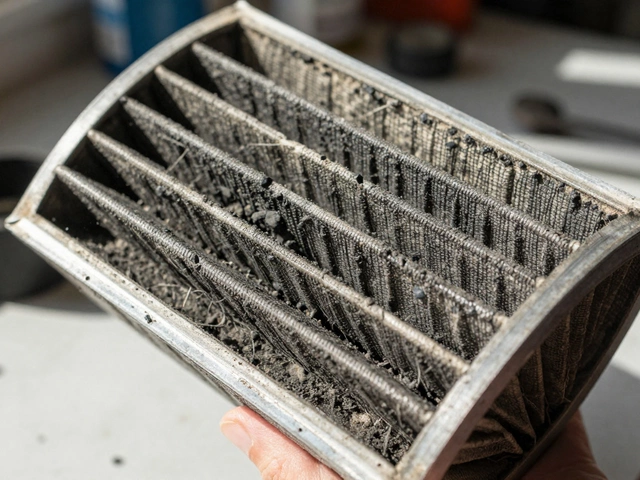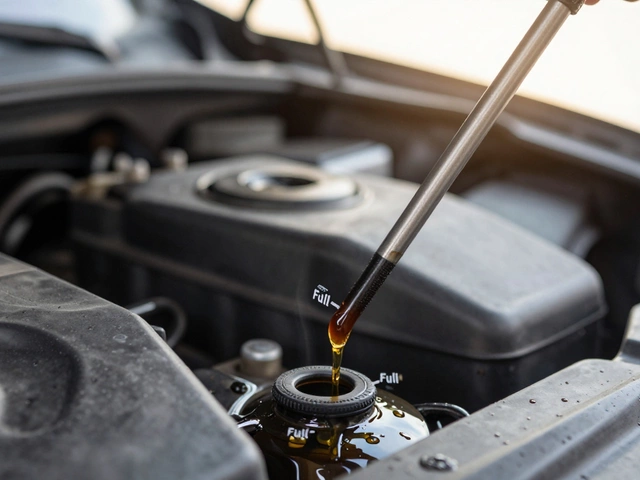
If you ever stood in a busy parking lot and a tuned-up car rumbled by, you know how tempting an aftermarket exhaust can be. The deeper growl, sleeker tips, and promises of horsepower upgrades are hard to resist. But there’s another side that doesn’t always make it to the YouTube highlight reels. I've seen plenty of folks, even close friends, who swapped their stock exhausts for something more flashy and instantly regretted it—some only a few drives later. Amelia still reminds me about that ‘incident’ with my old WRX and the neighbors’ campaign to get me to wake up later. It’s easy to get excited about an upgrade and overlook the unglamorous trade-offs. So, let's take a deep look at the major disadvantages of aftermarket exhausts, what they actually mean for you, and what you should really expect.
The Noise Factor & Social Headaches
This is the elephant in the garage. Most aftermarket exhausts are louder. Sometimes, way louder. Car enthusiasts might love a deep growl, but to bystanders, it often sounds like someone fired up a weed-eater with a megaphone. A study out of California in 2023 found that noise complaints related to aftermarket car exhausts doubled compared to five years ago. Many city areas, especially in Europe and the US, now police loud cars more aggressively. In fact, some local governments use sound meters at random street corners. If your exhaust exceeds limits (often around 95 decibels), that’s a ticket on your windshield, or worse, a ‘fix-it’ order that sends you back to stock—at your cost.
But the real impact goes beyond just fines. You could end up on a neighbor’s blacklist. When your car is the one waking up babies, nightshift workers, and the anxious golden retriever next door, you quickly realize that there are social consequences. In my own case, a simple drive around the block after an evening out ended up with two text messages and a not-so-subtle mention at the next block party. Your ‘cool’ exhaust quickly becomes infamous for reasons nobody wants.
Plus, the noise doesn’t just affect others. Some drivers actually report headaches or fatigue from the constant drone inside their own cabins, especially on road trips or during daily commutes. Stock exhausts are built with sound dampening for a reason. Take that away, and it’s not just the outside world that gets hammered with noise—you do, too. If long drives are your thing, a loud system can be a real dealbreaker. Ever tried taking a call or listening to an audiobook with a rumbling cat-back? Trust me—it’s like shouting at a concert.
There’s a common misconception that all aftermarket exhausts sound ‘good.’ But sound quality is subjective. A poorly designed or poorly fitted system can introduce rattles, hissing, or harsh tones that you might find embarrassing. Quality mufflers do a lot more than just muffle—they tune the sound. Skimp here, and you’ll regret it every time you turn the key.

Legal, Warranty, and Insurance Quagmires
It sounds boring, but the legal stuff is where most of the real headaches lurk. Aftermarket exhausts aren’t always street legal, even if they look perfect. Most carmakers stick to strict emissions and noise standards. When you swap your factory exhaust, you might accidentally make your car illegal—no matter what the guy at the shop promises. California’s CARB (California Air Resources Board) has some of the toughest rules: if the part isn’t officially certified, you risk failing inspection and, ultimately, losing your registration. That’s a massive hassle, especially if you rely on your car every day. A lot of other states and countries are working on similar standards: emissions, decibel restrictions, or equipment certifications. Don’t just trust that popular YouTube install guide—double-check the laws where you drive.
On the warranty side, this hits even harder. Manufacturers use any non-stock mod as a reason to deny warranty claims. Swapped exhaust? If your engine or emissions system ever fails—even if it’s not the exhaust’s fault—the dealership may refuse repairs under warranty. Plenty of people have faced big bills just because a tech spotted an aftermarket system. Sometimes, it doesn’t even take a failure. Some dealers red-flag your car and note it in the service history, making it a problem for as long as you own the car. Thinking of getting a new car someday and keeping your resale value high? A mismatched or aggressive aftermarket exhaust can make selling your ride way tougher than you think. Buyers (and their banks or insurers) get wary if they think the car was abused, raced, or might not pass inspection.
And let’s talk insurance. Some insurance companies consider exhaust upgrades a modification that changes the car’s risk profile. That might raise your premiums, or in rare cases, void your coverage if you didn’t declare it. There are even stories—yep, real ones—of accidents where claims got denied just because the driver hadn’t added the exhaust to their policy. Not every company is strict, but do you want to find out after an accident?
Lastly, some areas outright ban certain exhausts or design features, like resonator deletes or straight pipes. In the UK and parts of Australia, for example, police sometimes have the right to seize vehicles with non-compliant exhausts. It’s not just a slap on the wrist. Crossing international borders can also be dicey; customs officials have turned away cars with questionable modifications.

Performance Myths and Practical Drawbacks
The main pitch is always performance. ‘Get more horsepower!’ is the battle cry of every ad selling an aftermarket exhaust. But the truth is messier. On modern cars, especially with turbocharged or finely-tuned engines, an aftermarket exhaust rarely offers the massive gains you’re promised. In some cases, you get nothing but a change in sound—no extra power at all. And in the worst cases, picking the wrong system (wrong diameter, bad backpressure) can actually make your car slower or less responsive. Cheap systems or DIY installs might not fit correctly, hanging too low or fouling other components. Hit a speed bump too hard and you could shear off your shiny new pipes, leaving you stranded and out hundreds—or thousands—of dollars.
Fuel efficiency can suffer, too. While some setups are designed to reduce restrictions and let engines ‘breathe’ better, others disrupt how exhaust gas flows, tricking your car’s sensors and making the engine work harder to compensate. Instead of squeezing more miles per gallon, you could end up filling your tank more often—something few buyers expect. And don’t forget about the classic check engine light. If your new exhaust system changes emissions characteristics or sensor locations, your onboard diagnostics might throw up constant warnings. Those lights aren’t just annoying—a lit check engine can make your car fail emissions tests or void insurance in some regions.
Then there’s rust and wear. Lots of cheaper aftermarket systems use lower-quality steel or aluminum, which can start pitting, rusting, or breaking down within a year or two—especially if you live in a place that salts roads in winter. The OEM systems use stainless steel precisely because it lasts. Saving a little money upfront often costs more in the long run, factoring in re-installs or rushed repairs.
Fitting is another headache. Not all aftermarket exhausts line up perfectly with every car, despite what the box says. Small differences mean you might end up with a crooked tailpipe, leaky joints, or parts that bang against the undercarriage over potholes. While some shops do custom jobs to correct these issues, that’s more money and time lost. And if you’re thinking about doing it yourself, think again. Removing years-old bolts and hangers is no joke; even seasoned DIY folks end up needing special tools or make emergency runs when something snaps.
Then there’s resale. While a minority of buyers want a modified ride, most want bone-stock vehicles. Loud or obviously altered exhausts make a car harder to sell, since people worry about past abuse, legal hassles, or future inspections. Dealers especially will offer you less—assuming they’re willing to take your car at all.
If you like long drives, comfort, reliability, and peace of mind, an aftermarket exhaust often creates more trouble than it’s worth. Your car might look and sound cooler, but be ready for the trade-offs. If you’re committed, look for quality, consult local rules, double-check fitment, and always keep your original exhaust around. You might just want it back one day—or need it, when the law or your patience finally catches up.





